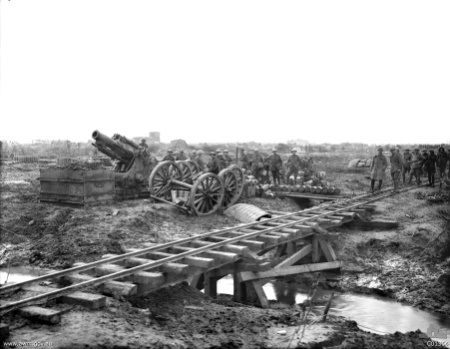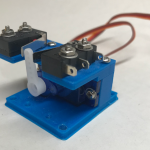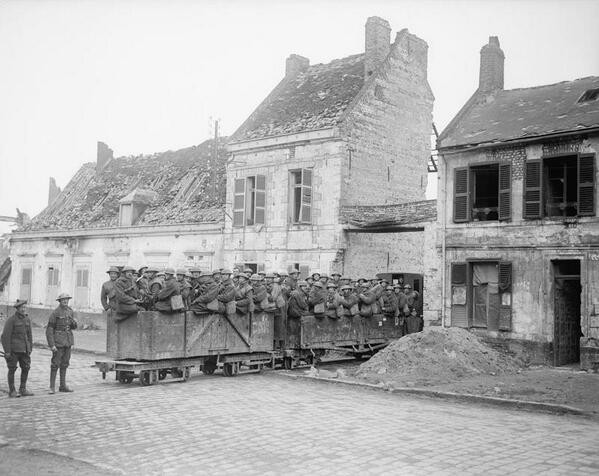
Back in February 2013 we took a quick look at the WWI Military Railway as inspiration for a small layout. Since today is November 11, Veterans Day, here in the USA (Armistice Day, Memorial Day, Remembrance Day in other parts of the world), I thought it would be a good time to focus on the Great War which was raging in full force just 100 years ago today. The European nations had a wide variety of home built locomotives and equipment but in this article I am going to concentrate on the types of equipment made by the American Expeditionary Force (AEF).
On November 6, 1917 the British had launched a major offensive on the Western front. By the 20th they will win a battle using tanks at Cambrai. Even though we know there is only one year of war left, they did not know that in 1917. By the spring of 1918 the Germans will mount a large offensive with fresh troops released from the Russian front (the Russians quit in December 1917). They will tear into the Allied lines and break through on the Somme. The Allies have several big battles ahead of them yet and victory is far from certain.
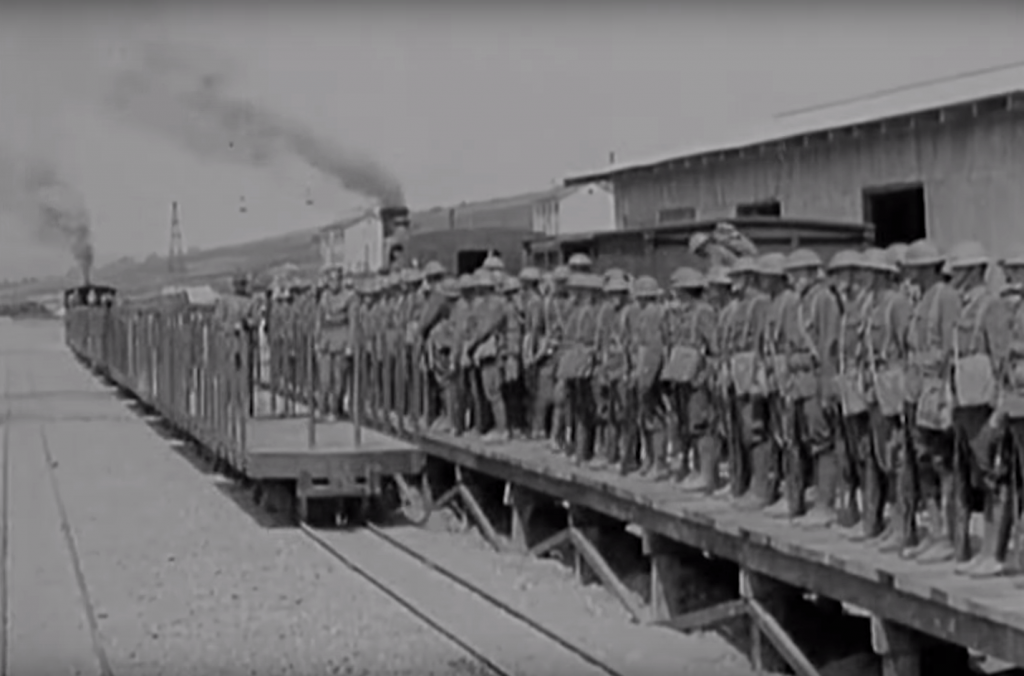
Standard (and broad gauge) railways provided the heavy hauling from ports and industrial centers to transfer points several miles behind the front lines. Baldwin provided large numbers of heavy 2-8-0 locomotives to the Allied powers. Materials and men would be transferred to narrow/light railways of 60cm (23-5/8″) gauge. The initial line would use steam locomotives such as the Baldwin 4-6-0T , Baldwin 2-6-2T and Alco 2-6-2T. Steam locomotives could haul heavy loads but the smoke trail was a great target for long range artillery. Additional transfer locations were setup just outside the combat areas where locomotives like the Baldwin 50hp Gas/Mechanical, would take materials and men to the forward lines. The gas/mechanicals would put out far less visible emissions and be able to get much closer to the front lines undetected. Many U.S. companies such as Baldwin, Alco, Davenport, Vulcan, Magor, Kilbourne & Jacobs, etc. produced 60cm equipment for all the allied countries.
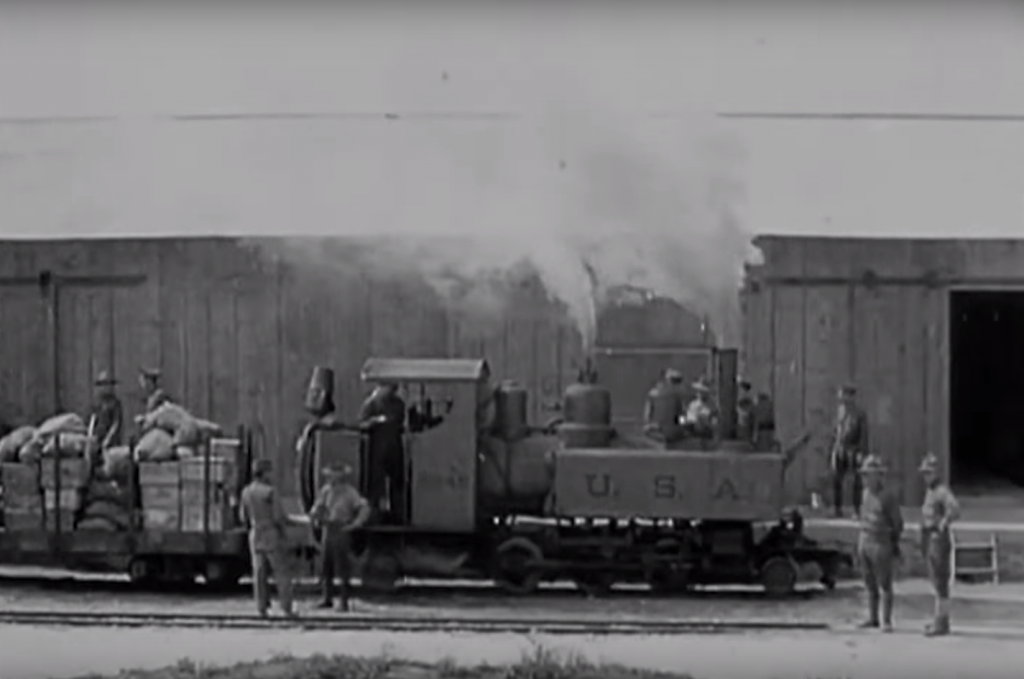
For the AEF, Baldwin produced a 2-6-2T numbered 5001-5195. Number 5195 was lost at sea while being transferred to Davenport Locomotive Works. These locomotives were initially painted grey with black smoke boxes. Baldwin also built 35 hp and 50 hp gas/mechanical locomotives for the AEF. The lighter locomotives were numbered 8001-8063. The heavier locomotives were numbered 7001-7126. The gas/mechanical were only able to operate at low speeds of about 4.5 mph, roughly the speed of a slow jogger.
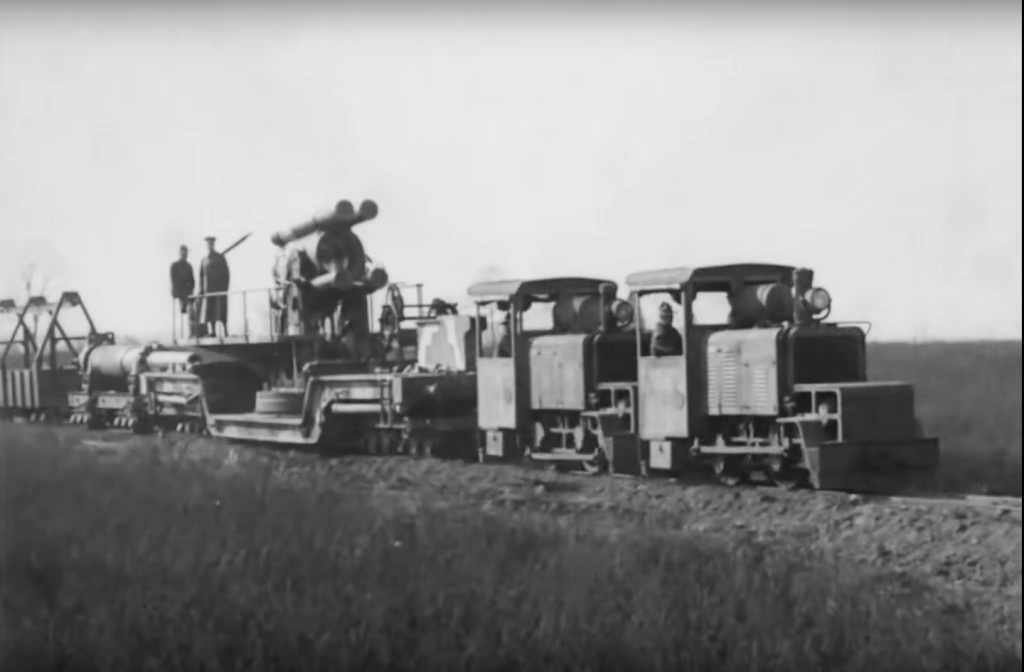
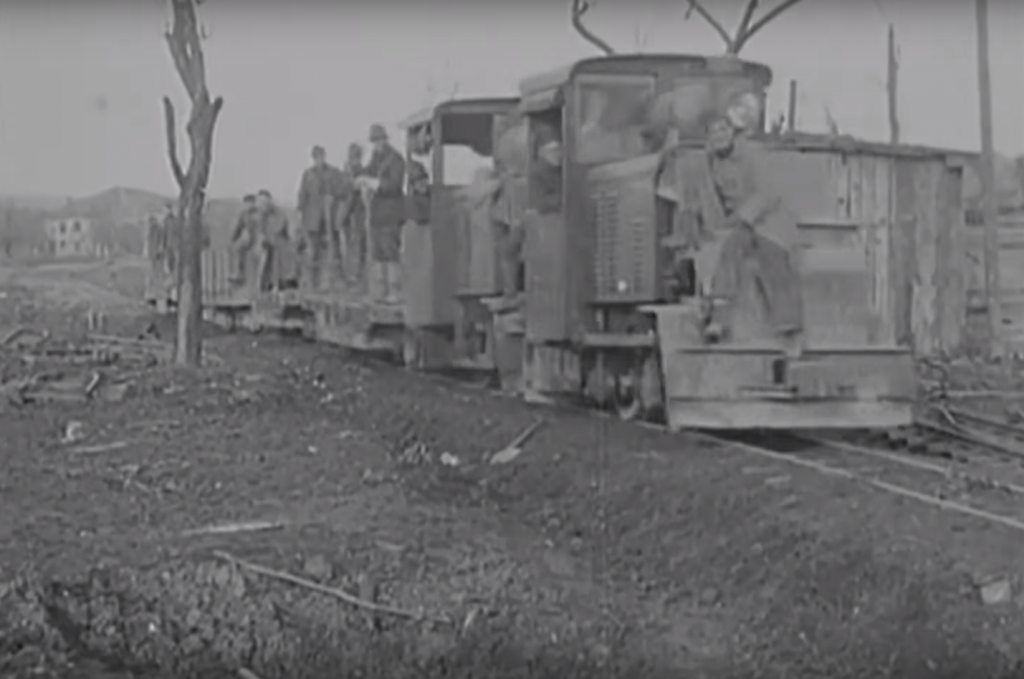
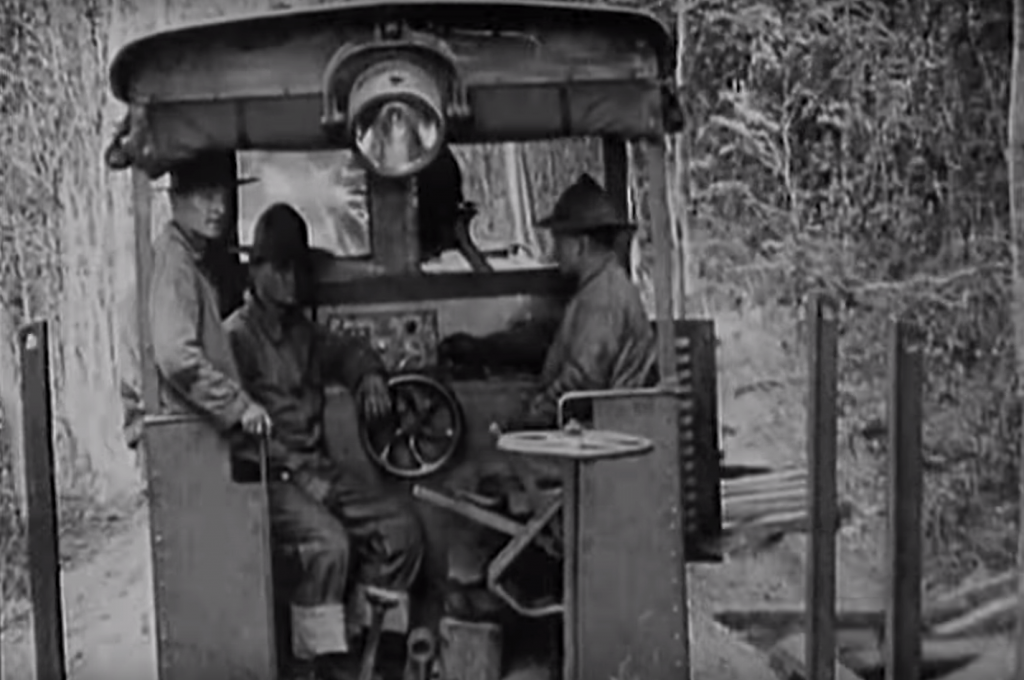
The standard American military railway car was 5ft 7in wide and 23ft long riding on two 4-wheel archbar trucks. Most were flatcars, but some had gondola sides, others had roofs with either open sides or enclosed as boxcars. Some were outfitted as shallow rectangular tank cars with a capacity of 2,600 gallons of water. There were also approximately 1,600 4-wheel side dump cars. These were produced in several versions for construction earth-moving.
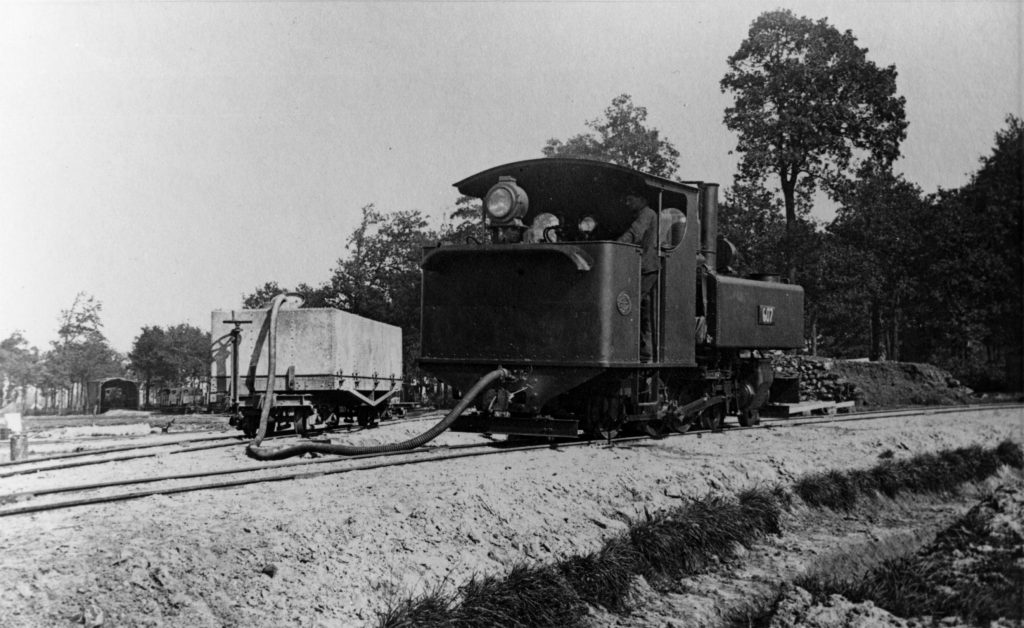
Track work, especially closer to the front, was very rough and hastily laid. There were two ways of laying the light rail. For the most part, track was laid directly on the ground with very little grading. Ties would be laid by hand and the rails spiked in place. A quick ballast of local materials (usually just dirt) was then applied. In the later part of the war, standard sectional track was used to speed the laying of track and make it re-usable. This track could also be quickly pulled up if a retreat was required and there was time to do it. These tracks were not meant to be used for a long time so speed of getting the line running was the most important factor.
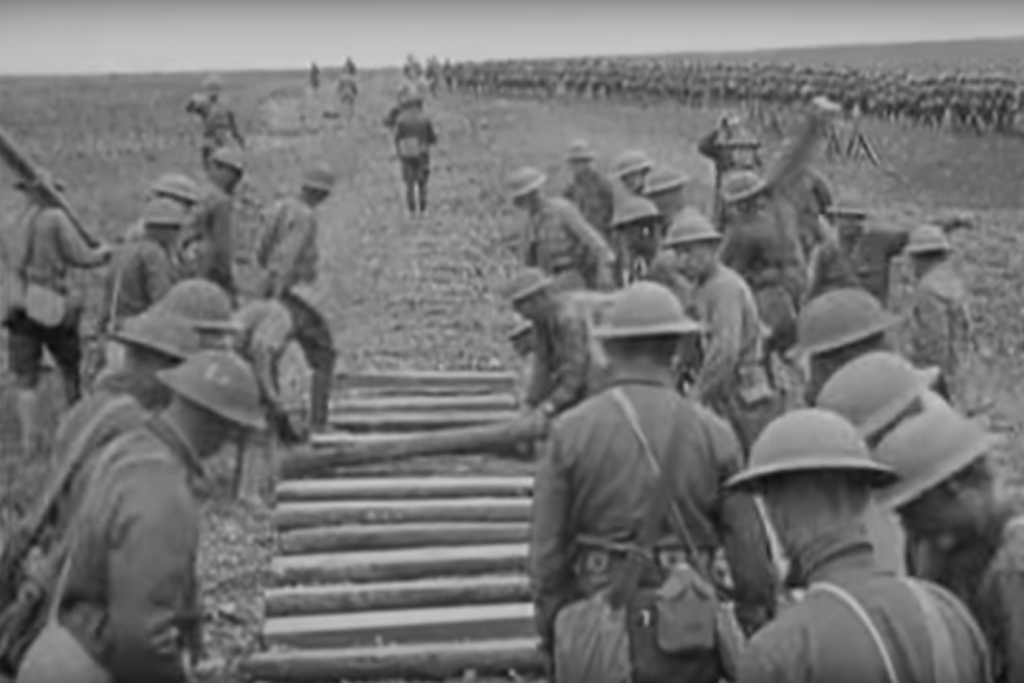
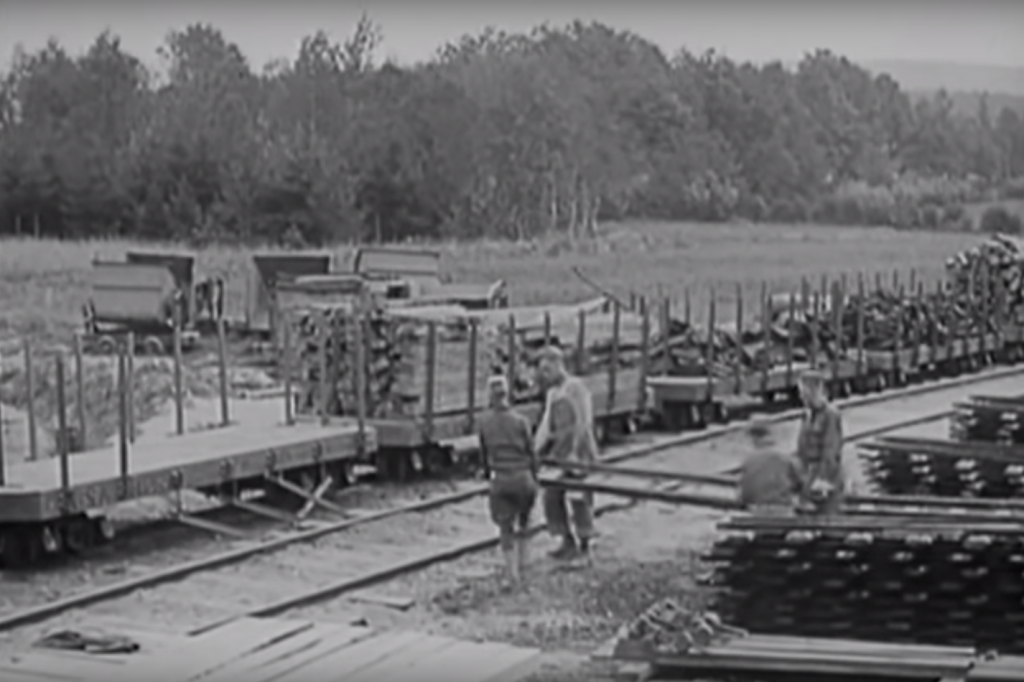
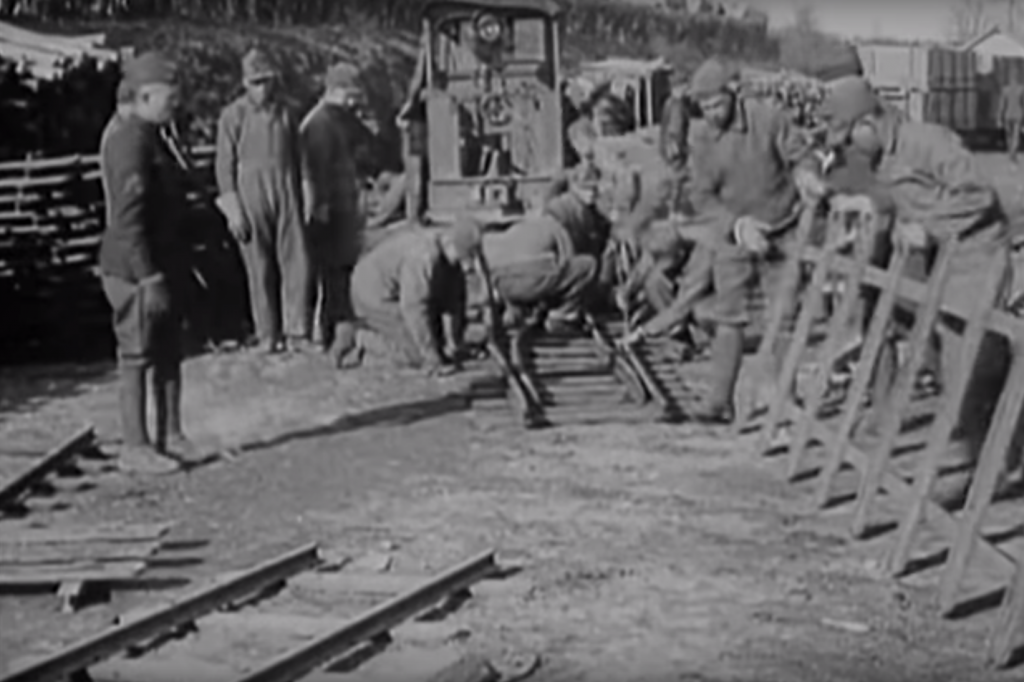
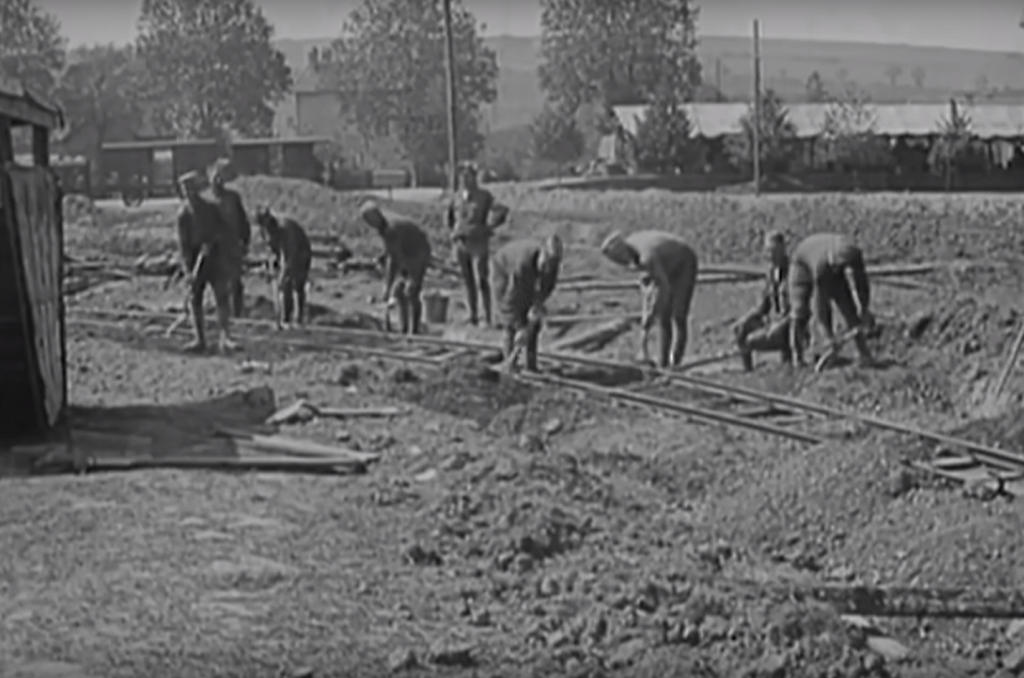
The light railways of the World War I offer a great variety for the modeler. Small and Large layout designs with lots of operation can be created while following the prototype. Transfer locations were sometimes just a yard where materials and men were transferred from one train to another while others were rows of warehouses with tracks on either sides. These facilities ranged from just a couple tracks to very large operations.
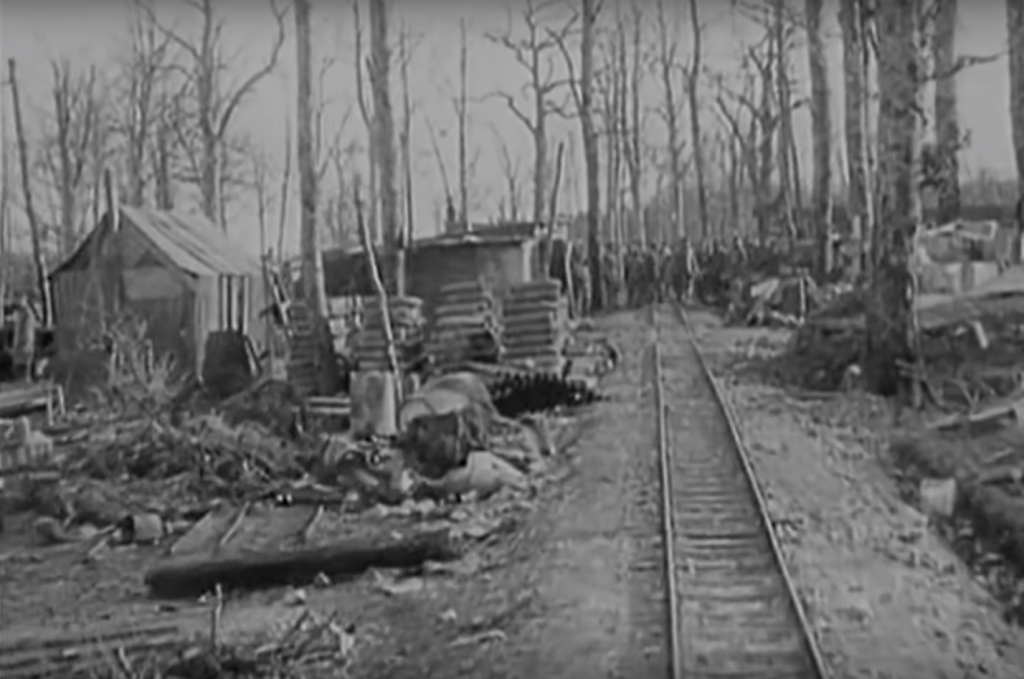
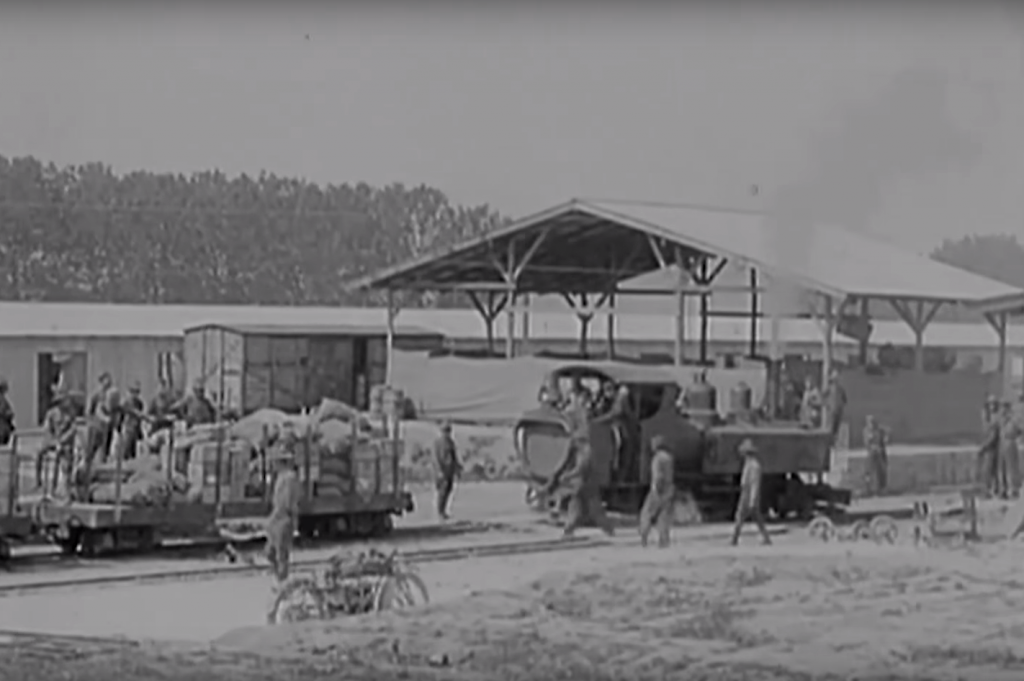
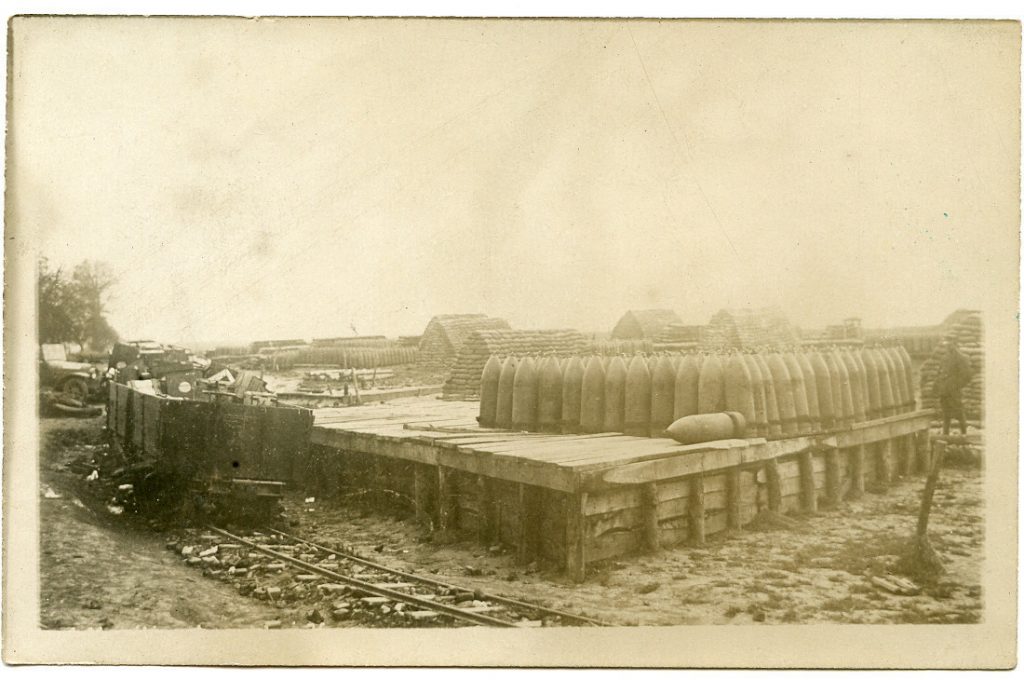
All materials for the war effort were not shipped in. some materials had to be locally sourced. It was not uncommon for the army to setup a logging operation in a nearby wooded area. The digging of trenches required the removed of large quantities of dirt. Small production areas for sand bagging or other needs would be erected close to where needed. War does not respect claims to land or property so these operations would take advantage of whatever the location could provide. These local industries can provide additional operating interest to a layout.
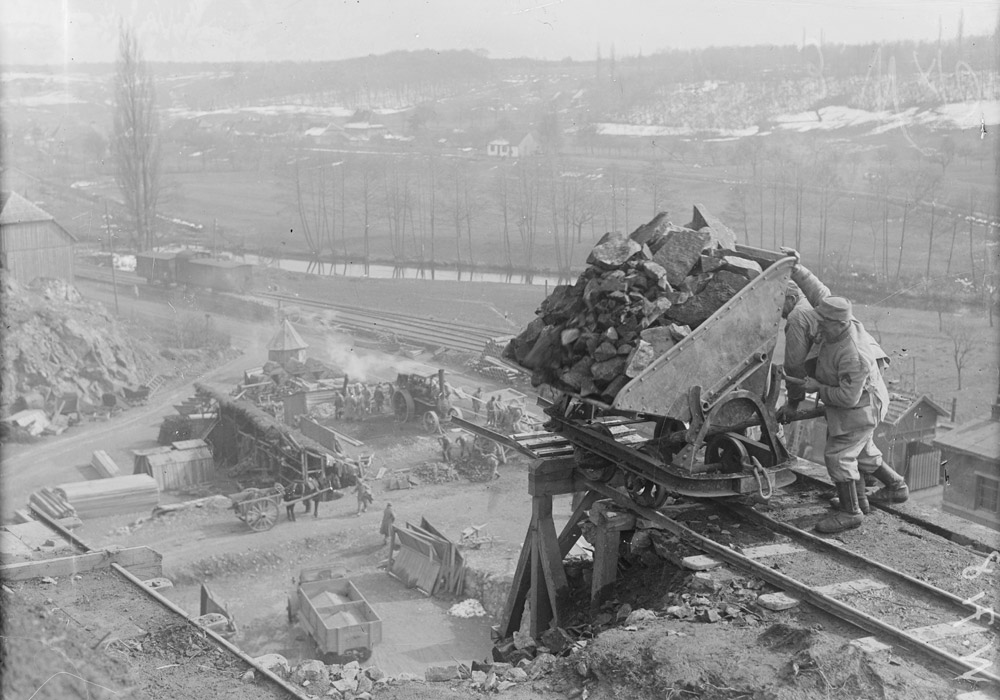
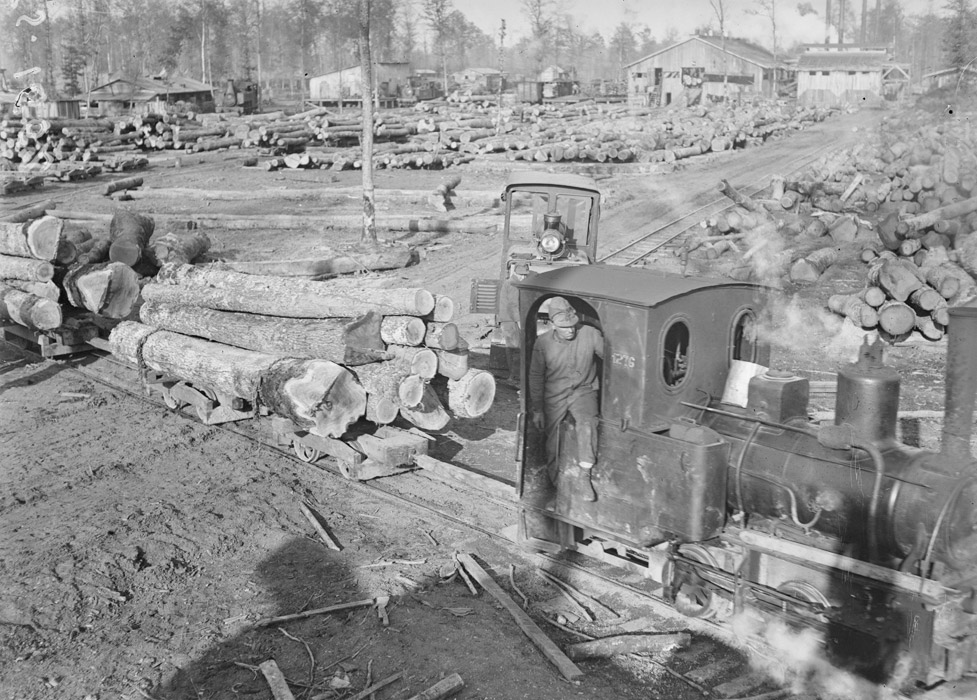
The light railway took whatever route was required to feed the war machine most effectively. It did not matter if who owned the land or what stood in its way. This was war and the need to provide the materials of war were the first priority. There are many accounts of the rail lines being laid straight through buildings to accommodate the most effective delivery of the war. Unlike traditional modeling where we struggle to hide where our trains enter a scene, following this practice, the modeler may have trains enter a scene form almost any direction or hole in any wall.

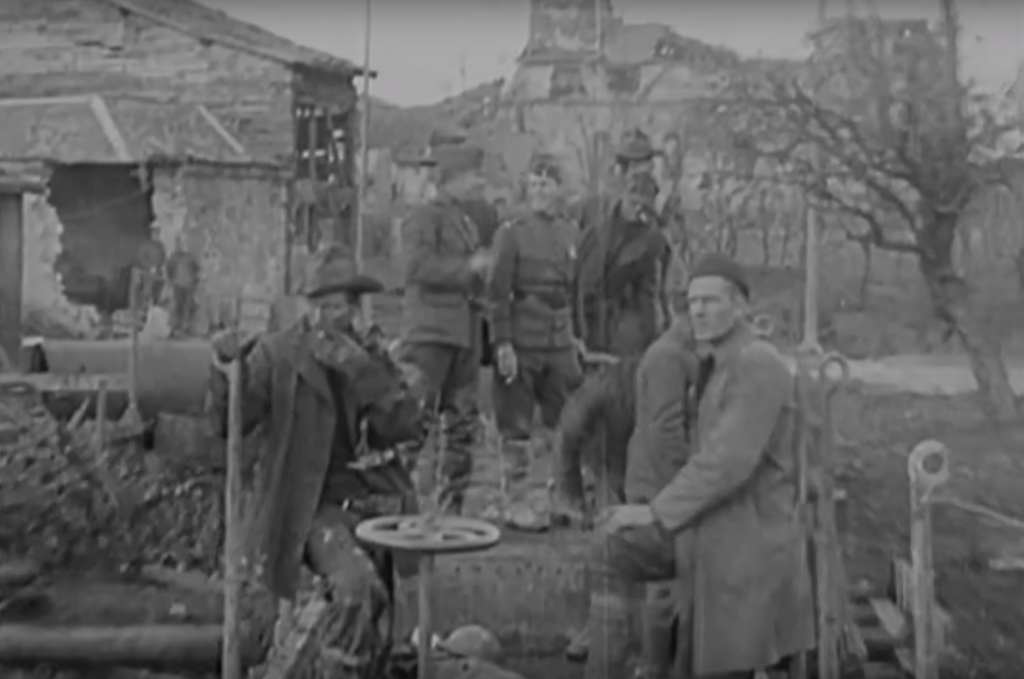
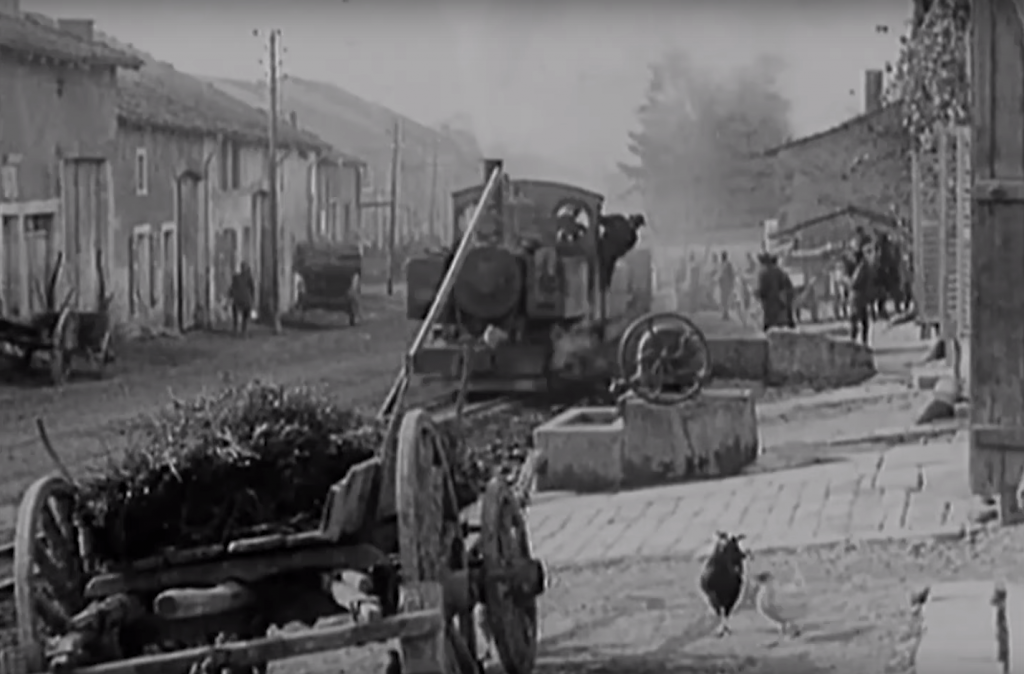
Modeling the WWI equipment may be a bit more challenging than modern equipment but there is a small and dedicated group of suppliers providing equipment in a few scales. Not being big to scratch build everything, I find the biggest challenge is finding soldiers, vehicles and equipment for WWI in a single scale that matches the available model rail equipment. If an exact model of the Baldwin 2-6-2 can not be located a somewhat representative locomotive could be harnessed by kit-bashing. The Baldwin gas/mechanical is another matter entirely, it’s unique look/profile makes it a very identifiable locomotive. My scale/gauge preference for modeling a WWI scene would be OO9 (1/76 scale running of N scale track). This is not the most accurate representation for the prototypical 60cm (23-5/8″) gauge but 1/76 (and 1/72) has a larger quantity of WWI military models available. The small scale and ability to do tight curves would allow for a very small layout with the most scenery.
December 1, 2017 UPDATE!!! I missed the availability of a very nice Baldwin 2-6-2 in WWI colors. Minitrains has a great looking little Trench Train Locomotive in original USA scheme and three more in grey or black. These are also available in open or closed cabs.

My second choice for scale/gauge would be O14 which is 2ft narrow gauge in 7mm scale (British 0 scale 1:43.5). This is very close to 1/48 O-scale so many models could be used. This scale would require a lot more scratch building for the locomotives and cars but the O14 gauge is within a scale 3/8 inch of prototype. The larger scale also has the ability to have more detail and is more intimate with the viewer. Scenes at the larger scale would draw the viewer in. See my other article my dabble with O14 from 2012
For additional information and stories from the front, I suggest the descriptive text “Running an Engine on the ‘Soixante’” from the publication An historical & technical biography of the Twenty-first engineers, light railway. United States Army contains much insight to AEF railway operations and the topographic nature of the Saint-Mihiel battle front.
World War I was known as “The War to End All Wars” and then later as “The Great War” until WWII came along. WWI was an extremely close quarter murderous affair. As a war of attrition, the fronts did not move very much. This was why the light railways became so necessary. WWII would see a mobile warfare with tactics like Blitzkrieg and eliminate the need for the light railway in the battle zone.
